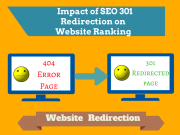Keyword Cannibalization: How to Identify & Fix for Better SEO Rankings
Picture this: You've spent months crafting multiple pages targeting similar keywords, only to watch your rankings plummet instead of soar. Welcome to the world of keyword cannibalization - one of SEO's most misunderstood and damaging issues.
Keyword cannibalization occurs when multiple pages on your website compete for the same search terms and user intent. Instead of strengthening your SEO efforts, these competing pages confuse search engines and dilute your ranking potential.
Understanding this concept isn't just important - it's critical for anyone serious about SEO success. The consequences can be devastating: dropping rankings, lost organic traffic, and confused search engines that can't determine which page deserves to rank.

Keyword Cannibalization: How to Identify & Fix for Better SEO Rankings
What Is Keyword Cannibalization?
Keyword cannibalization happens when two or more pages on your website target the same keyword or search intent, causing them to compete against each other in search results.
Think of it like having two employees apply for the same promotion - neither gets the full support they need to succeed.
The Key Distinction: Keyword vs. Content Cannibalization
Many SEO professionals confuse these two concepts:
Keyword Cannibalization: Multiple pages targeting identical keywords and search intent
Content Cannibalization: Duplicate or near-duplicate content across different URLs
While related, keyword cannibalization focuses specifically on search intent overlap, not just content similarity.
Real-World Example
Imagine an e-commerce site with these pages:
/best-running-shoes-2024/top-running-shoes-reviews/running-shoes-buying-guide
If all three target "best running shoes," they're cannibalizing each other's potential to rank.
Pro Tip: Focus on search intent, not just keywords. Pages can target different keywords but still cannibalize if they satisfy the same user need.
How Does Keyword Cannibalization Affect SEO?
The impact of keyword cannibalization extends far beyond simple ranking confusion. Here's how it systematically damages your SEO efforts:
Search Engine Confusion
When Google encounters multiple pages targeting the same keyword, it faces a dilemma: which page deserves to rank higher?
The Algorithm's Struggle: Search engines use complex algorithms to determine relevance and authority. With cannibalized content, these signals become mixed and contradictory.
Immediate Consequences:
- Ranking instability: Your pages may flip-flop in search results daily
- Lower overall rankings: Neither page achieves its full ranking potential
- Wasted crawl budget: Search engines spend resources indexing competing content
- Delayed indexing: New content takes longer to rank when competing internally
Why This Happens: Google's algorithm sees conflicting signals from your own domain. It's like having two witnesses giving different testimonies about the same event - the judge (Google) becomes uncertain about the truth.
Pro Tip: Use Google Search Console to monitor which of your pages ranks for specific queries. Frequent changes indicate cannibalization issues.
Diluted Page Authority and Link Equity
Think of page authority like a pie - when you split it among competing pages, each slice becomes smaller.
How Link Equity Gets Fragmented:
- External backlinks point to different competing pages
- Internal link juice spreads across multiple URLs instead of concentrating on one
- Social signals (shares, likes) get distributed among competing content
- User engagement metrics (time on page, bounce rate) become diluted
The Mathematics of Dilution: If you have 100 backlinks spread across 5 competing pages, each page receives roughly 20 links worth of authority. Consolidate to one page, and it receives the full power of 100 backlinks.
Domain Authority Impact: Your entire website's authority suffers when:
- Search engines can't identify your strongest content
- Topic clusters become fragmented and unclear
- Expertise, Authoritativeness, and Trustworthiness (E-A-T) signals weaken
Poor User Experience and Navigation Issues
Cannibalization doesn't just confuse search engines - it frustrates real users trying to find information.
User Journey Disruption: When visitors search for information, they expect to find one authoritative source. Multiple competing pages create decision paralysis.
Common User Frustrations:
- Confusing navigation: Users can't determine which page has the "best" information
- Information fragmentation: Key details scattered across multiple pages
- Duplicate information: Similar content across pages wastes user time
- Reduced conversion rates: Confused visitors are less likely to take action
Mobile Experience Impact: On mobile devices, cannibalization becomes even more problematic:
- Limited screen space makes navigation harder
- Users have less patience for multiple similar pages
- Slower loading times when bouncing between competing pages
The Trust Factor: Users question your site's authority when they find multiple pages saying similar things. This perception of disorganization hurts brand credibility.
Traffic and Revenue Impact: Real Numbers
The financial impact of keyword cannibalization can be devastating. Here are detailed case studies:
Case Study 1: E-commerce Fashion Site
- Before: 5 pages competing for "women's winter coats"
- Problem: Combined pages received 2,400 monthly visits
- Solution: Consolidated into one comprehensive page
- After: Single page now receives 4,100 monthly visits
- Revenue Impact: 40% increase in organic traffic = $15,000 additional monthly revenue
Case Study 2: B2B Software Company
- Before: 3 landing pages targeting "CRM software for small business"
- Problem: Pages ranked #8, #12, and #15 respectively
- Solution: Merged content and implemented 301 redirects
- After: Single page now ranks #3
- Lead Impact: 25% boost in qualified leads, worth $50,000 in new business
Case Study 3: Content Publisher
- Before: 8 blog posts about "email marketing best practices"
- Problem: None ranked on page 1
- Solution: Created pillar content with supporting cluster pages
- After: Main page ranks #2, doubled featured snippet appearances
- Traffic Impact: 150% increase in organic sessions
Industry-Specific Impacts:
E-commerce Sites:
- Product pages competing reduces conversion rates
- Category page cannibalization hurts entire product lines
- Brand searches become fragmented across multiple pages
Service-Based Businesses:
- Multiple service pages confuse potential clients
- Geographic cannibalization splits local SEO authority
- Contact and conversion paths become unclear
Content Publishers:
- Competing articles split social media engagement
- Featured snippet opportunities get divided
- Email subscriber acquisition becomes inefficient
Measurement Metrics to Track:
- Organic click-through rates: Cannibalized pages typically show declining CTRs
- Average position changes: Monitor rankings for target keywords weekly
- Conversion rate variations: Track how cannibalization affects business goals
- Time on site metrics: Users spend less time when confused by similar content
Pro Tip: Create a monthly "cannibalization cost" report showing traffic and revenue losses. This data helps prioritize which fixes will deliver the highest ROI.
Common Causes of Keyword Cannibalization
Understanding why cannibalization occurs helps prevent future issues:
Over-Optimization Syndrome
Many website owners make this mistake:
- Creating multiple pages for slight keyword variations
- Targeting "best CRM software" and "top CRM software" on separate pages
- Building individual pages for every long-tail variation
Similar Content Creation
This happens frequently with:
- Product pages: Multiple versions of similar products
- Blog content: Covering the same topic from slightly different angles
- Service pages: Overlapping service descriptions
Poor Information Architecture
Structural issues that cause cannibalization:
- Lack of clear content hierarchy
- No keyword mapping strategy
- Inconsistent internal linking patterns
- Archive pages competing with main category pages
Legacy Content Issues
Outdated content often creates cannibalization:
- Old blog posts never consolidated or updated
- Duplicate pages from site migrations
- Seasonal content that accumulates over time
Pro Tip: Conduct quarterly content audits to identify and resolve cannibalization before it impacts rankings.
How to Identify Keyword Cannibalization?
Detecting cannibalization requires both tools and manual investigation. Here's your detection toolkit:
Warning Signs to Watch For
Look for these red flags in your analytics:
- Ranking fluctuations: Keywords jumping between different pages
- Multiple URLs ranking: Seeing 2+ of your pages in SERPs for the same query
- Declining organic traffic: Despite creating more content
- Lower click-through rates: Confused users clicking less frequently
Essential Detection Tools
Google Search Console
- Use the Performance report to identify queries ranking multiple URLs
- Filter by specific keywords to see competing pages
- Monitor average position changes over time
SEO Tools for Advanced Analysis
- Semrush: Site Audit feature identifies cannibalization automatically
- Ahrefs: Keywords Explorer shows multiple URLs ranking for same terms
- SE Ranking: Provides cannibalization reports with severity ratings
Manual SERP Analysis
Perform these checks regularly:
- Site Search Method: Use
site:yoursite.com "target keyword"in Google - Incognito Browsing: Check rankings without personalization
- Different Locations: Test rankings from various geographic locations
- Mobile vs. Desktop: Compare rankings across devices
Advanced Detection Techniques
Keyword Mapping Audit Create a spreadsheet with:
- All your important pages
- Target keywords for each page
- Current rankings
- Search volume data
Internal Competition Score Rate your pages on a scale of 1-10 for keyword overlap. Pages scoring 8+ likely have cannibalization issues.
How to Fix and Prevent Keyword Cannibalization?
Once you've identified cannibalization, here's your action plan:
Solution 1: Content Consolidation
When to Use: Similar pages with overlapping content
Steps:
- Identify the strongest-performing page
- Merge content from weaker pages
- Implement 301 redirects from old URLs
- Update internal links to point to consolidated page
Pro Tip: Don't just copy-paste content. Rewrite merged sections to create a cohesive, comprehensive resource.
Solution 2: Canonical Tags
When to Use: Similar content that serves different purposes
Implementation:
- Set canonical tags pointing to the primary version
- Keep all pages live for user experience
- Consolidate ranking signals to one URL
Solution 3: Content Differentiation
When to Use: Pages that should target different keywords
Action Steps:
- Refocus each page on distinct search intents
- Update title tags and meta descriptions
- Modify content to target different keyword variations
- Optimize for different funnel stages (awareness vs. decision)
Solution 4: Strategic Internal Linking
Fix your linking structure:
- Create topic clusters: Link related content hierarchically
- Use descriptive anchor text: Help search engines understand page focus
- Implement breadcrumbs: Show clear site structure
- Regular link audits: Ensure links support your keyword strategy
Solution 5: Page Purpose Clarification
Define clear roles for each page:
- Homepage: Brand and navigation hub
- Category Pages: Broad topic coverage
- Product/Service Pages: Specific offerings
- Blog Posts: Educational and informational content
Real-World Examples & Case Studies
Case Study 1: E-commerce Fashion Retailer
Problem: 15 different pages targeting "women's summer dresses"
Solution:
- Consolidated into 3 strategic pages: category page, buying guide, and trend article
- Implemented 301 redirects for remaining pages
- Created clear internal linking hierarchy
Results:
- 65% increase in organic traffic
- 40% improvement in conversion rate
- Featured snippet acquisition for main target keyword
Case Study 2: B2B Software Company
Problem: Multiple landing pages competing for "project management software"
Solution:
- Differentiated pages by company size (small business, enterprise, freelancers)
- Updated content to match specific user intents
- Restructured internal linking
Results:
- 30% boost in qualified leads
- 50% improvement in time on page
- Higher rankings for all targeted variations
Case Study 3: Content Publisher
Problem: 25 blog posts about "social media marketing tips"
Solution:
- Created comprehensive pillar page
- Converted individual posts to supporting cluster content
- Implemented strategic internal linking
Results:
- Doubled organic search visibility
- 3x increase in social shares
- Established topical authority in social media marketing
Best Practices and Pro Tips
Advanced Keyword Mapping Strategy
A strategic keyword map is your first line of defense against cannibalization. Here's how to build one that actually works:
- Create Your Master Keyword Database: Start with a comprehensive audit of your current content and target keywords.
- One primary keyword per page: Focus your optimization efforts on a single main term
- Support with semantic variations: Include 3-5 related terms naturally throughout content
- Document search intent: Categorize by informational, navigational, commercial, or transactional intent
- Assign difficulty scores: Rate keyword competition from 1-10 to prioritize efforts
Keyword Clustering Method: Group related keywords to avoid future cannibalization:
- Primary clusters: Main commercial keywords (e.g., "best CRM software")
- Supporting clusters: Long-tail variations (e.g., "CRM software for small teams")
- Content clusters: Educational keywords (e.g., "what is CRM software")
- Brand clusters: Branded search terms and variations
Mapping Template Structure: Create a spreadsheet with these columns:
- URL/Page Title
- Primary Keyword (Search Volume)
- Secondary Keywords (2-3 terms)
- Search Intent Category
- Current Ranking Position
- Monthly Organic Traffic
- Last Updated Date
- Cannibalization Risk Score (1-10)
Pro Tip: Use color coding in your spreadsheet. Red for high cannibalization risk, yellow for moderate risk, green for optimized pages.
Content Planning Framework That Prevents Cannibalization
A content planning framework that prevents keyword cannibalization involves checking for existing pages targeting the same keywords before creating new content. Start by validating search intent, auditing your site for similar pages, and analyzing SERPs to decide if you should update, merge, or create supporting content. Map each piece into a topic cluster with clear internal linking, use unique primary keywords, and track performance post-publication. Maintain a content inventory to avoid duplication and ensure every new page strengthens overall SEO authority.
The 5-Question Content Audit:
1. Unique Intent Check: Does this serve a search intent not covered by existing content?
- Research user questions on forums, social media, and competitor sites
- Use tools like AnswerThePublic to find unique angles
- Check "People Also Ask" sections in Google
2. Content Enhancement Test: Can this information strengthen an existing page instead?
- Review current content for gaps or outdated information
- Consider if new content would make an existing page more comprehensive
- Evaluate if combining content would create a stronger resource
3. Competition Analysis: Will this compete with current content for rankings?
- Use site:yoursite.com searches to find similar content
- Check which pages currently rank for related keywords
- Analyze search intent overlap using tools like Semrush
4. User Journey Mapping: Where does this fit in your conversion funnel?
- Top-of-funnel: Awareness and educational content
- Middle-of-funnel: Comparison and consideration content
- Bottom-of-funnel: Decision and purchase-focused content
5. Content Gap Analysis: Does this fill a genuine content void?
- Research competitor content to find missed opportunities
- Analyze search trends for emerging topics
- Survey your audience for content requests
Content Calendar Integration
Build cannibalization prevention into your editorial calendar:
- Weekly reviews: Check new content against existing pages
- Monthly audits: Review published content for emerging overlaps
- Quarterly strategy sessions: Realign content with business goals
Content Brief Template: For every new piece of content, create a brief including:
- Target keyword and search intent
- Primary audience and their pain points
- Unique value proposition vs. existing content
- Internal linking opportunities
- Success metrics and KPIs
Comprehensive Ongoing Monitoring System
Effective cannibalization prevention requires systematic monitoring. Here's your complete surveillance setup:
Automated Alert System: Set up these critical alerts in your SEO tools:
Google Search Console Alerts:
- New queries ranking multiple URLs
- Sudden drops in average position
- Click-through rate decreases
- Impression changes for key terms
Third-Party Tool Monitoring:
- Semrush: Position tracking alerts for ranking changes
- Ahrefs: Keyword cannibalization reports (monthly)
- SE Ranking: Automated cannibalization detection
Custom Monitoring Dashboard: Create a weekly dashboard tracking:
- Keyword Position Volatility: Pages showing frequent ranking changes
- Traffic Distribution: Keywords sending traffic to multiple pages
- Click-Through Rate Trends: Declining CTR indicating confusion
- Conversion Rate Analysis: Pages with dropping conversion rates
Monthly Cannibalization Health Check:
Week 1: Run automated cannibalization reports
Week 2: Manual SERP analysis for top 50 keywords
Week 3: Content overlap audit using text analysis tools
Week 4: Performance review and action plan creation
Key Performance Indicators to Track:
- Cannibalization Score: Percentage of keywords with multiple ranking URLs
- Ranking Stability Index: Average position volatility across key terms
- Traffic Consolidation Ratio: Traffic concentration vs. distribution
- Internal Competition Rate: Number of pages competing per keyword
Pro Tip: Create a monthly "Cannibalization Health Score" combining these metrics. Track improvements over time and benchmark against industry standards.
Advanced Technical SEO Considerations
Your technical foundation can either support or sabotage your anti-cannibalization efforts:
XML Sitemap Optimization Strategy: Don't just submit all pages - prioritize strategically:
Tier 1 Priority: Homepage, main category pages, top converting pages
Tier 2 Priority: Important product/service pages, key blog content
Tier 3 Priority: Supporting content, archive pages, seasonal content
Advanced Robots.txt Configuration: Guide search engine crawling to support your keyword strategy:
- Block competing low-value pages (search results, filters)
- Prioritize crawling of your most important content
- Prevent indexing of duplicate or thin content pages
- Use crawl-delay directives for large sites
Page Speed as a Ranking Factor: Faster pages often win cannibalization battles because:
- User preference: Visitors stay longer on faster pages
- Crawl efficiency: Search engines prefer efficiently coded pages
- Mobile performance: Speed matters more on mobile devices
- Core Web Vitals: Google's ranking factors favor fast-loading content
Speed Optimization Checklist:
- Compress images and use modern formats (WebP, AVIF)
- Minimize HTTP requests and combine CSS/JavaScript files
- Implement browser caching and CDN distribution
- Optimize server response times and database queries
Mobile-First Optimization: Ensure consistency across devices to prevent mobile cannibalization:
- Responsive design: Same content, same keywords across all devices
- Mobile page speed: Prioritize mobile loading times
- Touch-friendly navigation: Easy access to all important pages
- Local SEO integration: Consistent NAP (Name, Address, Phone) information
Schema Markup Strategy: Use structured data to help search engines understand page relationships:
- Breadcrumb schema: Show site hierarchy clearly
- Article schema: Distinguish content types and purposes
- Product schema: Differentiate similar products
- FAQ schema: Capture featured snippet opportunities
Internal Linking Architecture: Build a linking structure that supports your keyword strategy:
Hub and Spoke Model:
- Create topic hubs (pillar pages) for main keywords
- Link supporting content (cluster pages) to relevant hubs
- Use descriptive, keyword-rich anchor text
- Maintain consistent linking patterns
Link Equity Distribution:
- Prioritize links to your most important pages
- Use internal nofollow sparingly and strategically
- Create topic-based link clusters
- Regularly audit and update broken internal links
Pro Tip: Implement hreflang tags correctly for international sites. Improper hreflang can create cannibalization between country-specific pages targeting similar keywords.
Frequently Asked Questions about Keyword Cannibalization
Can I target the same keyword on multiple pages?
Short answer: Generally, no.
Detailed answer: You can target variations and related terms, but avoid exact keyword duplicates. Instead, focus on different search intents or create a content hierarchy where one page is clearly primary.
How often should I check for cannibalization?
Recommended frequency:
- Monthly: Quick checks using Google Search Console
- Quarterly: Comprehensive audits with SEO tools
- After major content updates: Immediate review of new content
Does cannibalization affect branded keywords?
Yes, it can. Even branded searches can experience cannibalization, especially with:
- Multiple product pages
- About pages and homepage competition
- Press releases and news content
Solution: Establish clear branded keyword hierarchy with your homepage as primary.
Is cannibalization always bad, or can it be beneficial?
Rarely beneficial. Some potential exceptions:
- Different user intents: Same keyword, different search purposes
- Geographic variations: Local vs. national targeting
- Seasonal content: Time-sensitive information
However, even in these cases, proper content differentiation is usually better than true cannibalization.
What about international SEO and cannibalization?
Special considerations:
- Use hreflang tags for different languages/regions
- Avoid exact content duplication across country sites
- Consider subdomain vs. subdirectory impact on cannibalization
Conclusion
Keyword cannibalization represents one of the most common yet fixable SEO challenges facing website owners today. The key to success lies in understanding that more content isn't always better - strategic, well-differentiated content is what drives real SEO results.
By implementing the detection methods, solutions, and best practices outlined in this guide, you'll not only resolve existing cannibalization issues but prevent future ones from occurring. Remember that fixing cannibalization isn't a one-time task - it requires ongoing monitoring and strategic content planning.
The investment in resolving keyword cannibalization pays dividends: clearer search engine signals, improved user experience, and ultimately, better organic search performance. Start your cannibalization audit today, prioritize the highest-impact fixes, and watch your SEO efforts finally work in harmony rather than competition. Your search rankings - and your bottom line - will thank you for it.





